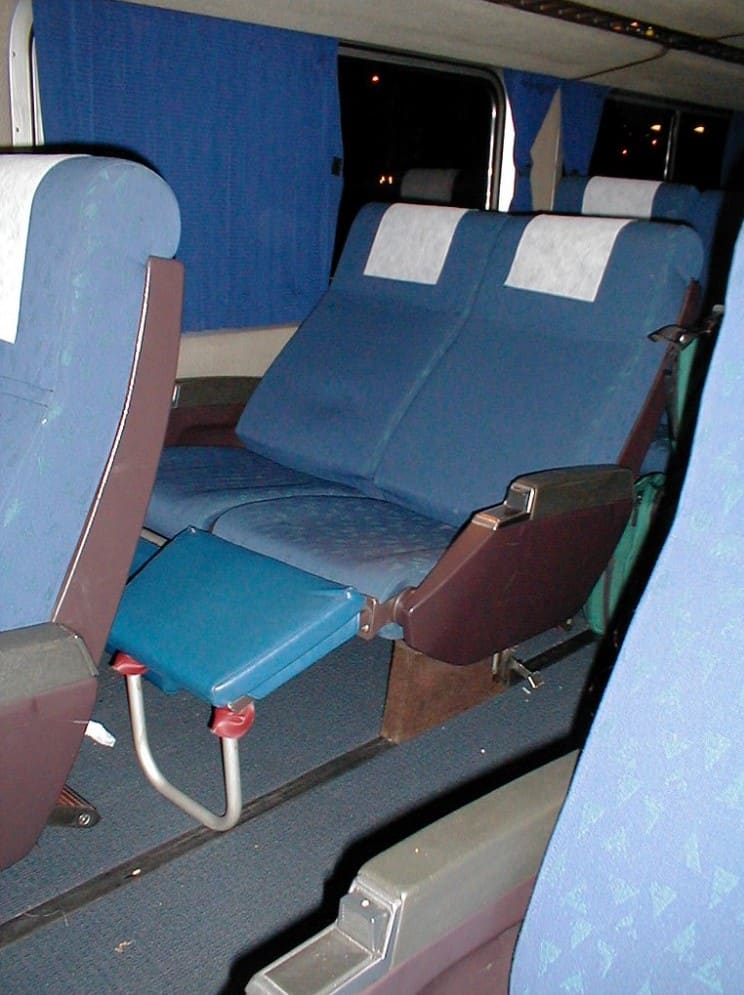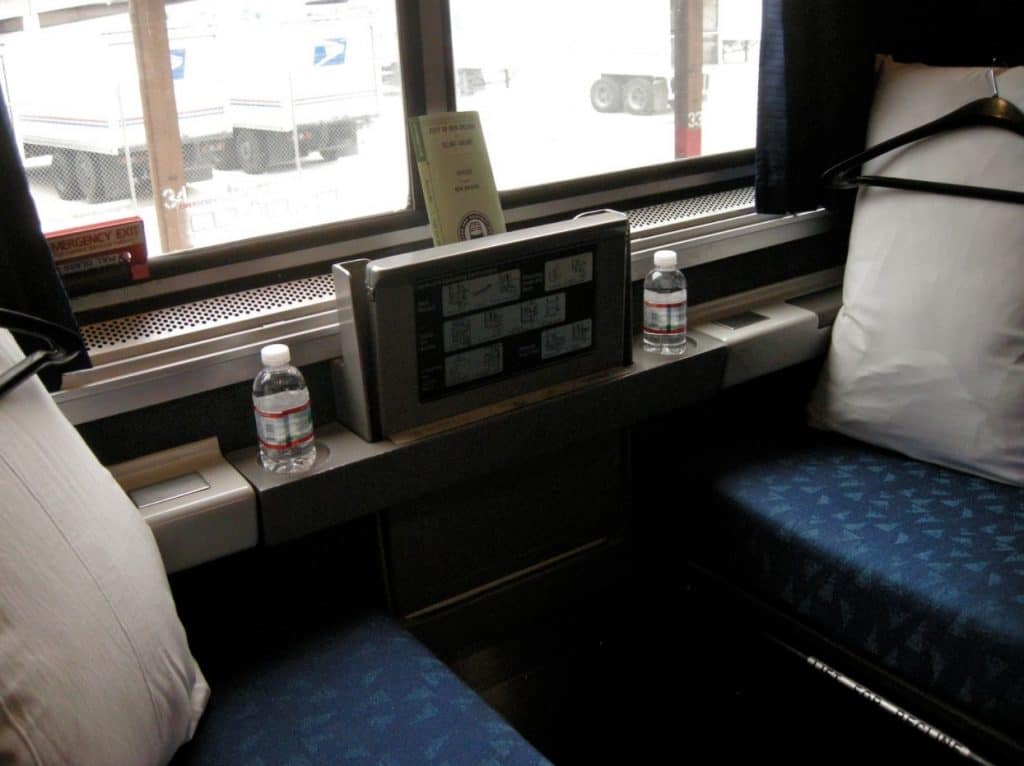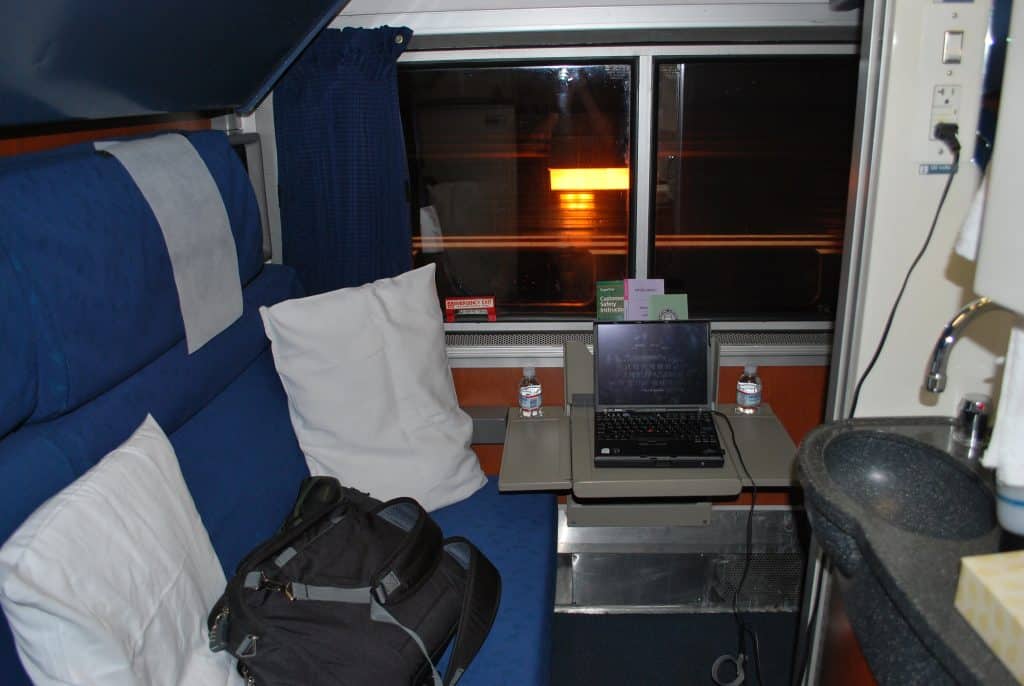The Ultimate Guide to Amtrak Cross-Country Travel
How Long Does It Take To Travel Cross-Country on Amtrak?
As of Spring 2021, the shortest possible time to travel cross-country on Amtrak is just over 64 hours. That’s two days and 16 hours. To do this, you’d take the Capitol Limited from DC (18 hours), spend a roughly five-hour layover in Chicago, and then board the Southwest Chief to Los Angeles (41 hours) to complete your trip. The shortest trip originating in New York would be about 73 hours, which would use the Cardinal and Southwest Chief.
Got some time to spare? The longest route using these trains would take the Cardinal to Chicago before using the Texas Eagle/Sunset Limited combination. This clocks in at nearly 92 hours – about a whole day longer than the shortest trip!
All of this, of course, assumes no delays – which unfortunately isn’t always the case on Amtrak.
How Bad Are Amtrak Delays?
Any sort of delay is never welcome news on your trip. And unfortunately, Amtrak is known for not always running on time. The biggest cause of delays, according to Amtrak, is freight train interference. Outside of the Northeast Corridor, Amtrak does not own the tracks it uses. They belong instead to the nation’s freight rail companies, who also use them to operate their business. By law, freight rail is supposed to allow passenger trains priority. In practice, this doesn’t always happen. The law is rarely enforced – in fact, only once in its history.
Amtrak gives you some information on which freight rail companies are responsible for the most delays as part of its Host Railroad Report Card. As of 2019, none of Amtrak’s long-distance routes meet the standard of being within 15 minutes of their scheduled time on 80% of trips. Of the trains we’ve looked at, the Cardinal scores the best at 55% on time. On the other hand, the Sunset Limited is on-time barely one out of five trips.
You’ll also have to deal with potential delays resulting from mechanical issues, trespassers on the track, criminal investigations at rail crossings, weather, or any number of other reasons. In short, be prepared, and be flexible. You can see whether your train is delayed using Amtrak’s Track A Train tool.
Overall, delays can unfortunately range from non-existent to 24 hours or more. These are one of the reasons it’s crucial to be patient and not to take Amtrak cross-country if you absolutely must be somewhere at a certain time.
How Much Does It Cost To Travel Cross-Country On Amtrak?

Amtrak fares vary depending on the distance you’re traveling, the demand for the particular train, and the type of ticket you’re purchasing. The best way to find the cost of your specific trip is to use the trip planner on Amtrak.com. It’ll give you the most updated price and availability for any route you choose.
Traveling Coach
For our estimates, we used the non-refundable Saver rate, booked at least a month in advance for non-holiday travel. We found that, when completed in as few segments as possible, a cross-country Amtrak trip will cost between $230 and $280 traveling coach. In many cases, that’s cheaper or comparable to the cost of airfare.
Traveling With A Room
However, prices spike dramatically if you want a roomette or bedroom. Using the same criteria as above, a private room cross-country on Amtrak could cost $1400 to $1800! This does include all your meals while on the train and several nights’ worth of accommodations. But still, it’s a significantly more expensive trip, so consider your travel needs before booking.
Keep in mind that you’ll need to purchase new tickets every time you get on again after getting off your original train. This can significantly increase your overall costs, especially if you make a lot of stops.
Rail Passes
Until recently, another great and affordable way to travel cross-country on Amtrak was to purchase a USA Rail Pass. These were the perfect choice for travelers who wanted to get off at stops along the way and hop back on a few days later. Rail Passes were available in three categories, each of which includes a certain number of segments, as well as a general timeframe they needed to be used in. However, sales of these are currently suspended. Amtrak is promising to release a “new and improved” rail pass in Summer 2021.
Where Do You Sleep On Amtrak Cross-Country Trains?
Unless you’re getting on and off to stay at hotels or other accommodations (and navigating the costs and scheduling of separate tickets), you’ll need to get some shut-eye while taking Amtrak cross-country. If you’re traveling with a general coach ticket, that means kicking back and relaxing in your seat. But don’t worry too much if this is your plan. Amtrak coach seats are actually fairly comfortable, recline well, and have a good amount of legroom. You won’t be able to lay flat, but it should be good enough for a few hours of rest. Keep in mind you’ll also have a seatmate next to you, so you won’t have too much personal space to stretch out.
If you’re willing to spring for the extra cost, you have a few options for rooms – depending on how much space you really need.
Roomette
If you’re traveling solo or are two smaller people, a roomette may work well for you. Amtrak roomettes are three and a half feet wide, and just over six and a half feet long. That’s a whopping total of 22.75 square feet! During the day, your roomette will consist of two chairs facing one another, with a small open area in between. You’ll have your own private space and views from your window, and a door to shut if you’d like some privacy.
At night, a bunk will fold down from above, while the two chairs are converted into a sleeping berth below. For a single person, this can be downright cozy.
However…anyone sleeping on the top bunk might feel like it’s a bit too cozy. You’ll have access to a private shower stall, albeit one shared by other passengers in your sleeper car. You’ll also share a private bathroom with the other sleeper car passengers. Two people might find this space a little cramped, especially when using it multiple days in a row. But for those looking for the most affordable room option, this is your best bet.
Bedroom
Need a little more space or just want to travel Amtrak cross-country in style? Upgrade to a bedroom. At seven feet long and six and a half feet wide, you’ll enjoy nearly double the space of a roomette. Plus, you’ll have your own private bathroom, including a small shower. During the day, you’ll have a couch and armchair – enough space to comfortably fit three people. At night, a bunk can fold down over a lower bed.
That extra space and private bathroom don’t come for free, however. You can expect to pay several hundred dollars more than a roomette per night.
Family Bedroom
If you’re traveling with a family or small group of friends, Amtrak’s largest room size is the family bedroom. These rooms measure approximately nine and a half feet long by five feet wide, totaling just over 47 square feet. These rooms are set up with two couches during the day, which transform into two sets of bunks at night. This allows you to comfortably sleep four people in one room. However, you’ll lose the in-room bathroom and shower available in regular bedrooms. You’ll still have access to the shared private bathroom and shower in your car. You may not always be able to book family bedrooms due to train type or lack of availability.
Where Do You Eat While Traveling Long Distance On a Train?
There are two main options for food on Amtrak trains.
Café Car
If you’re traveling coach, you’ll most likely need to feed yourself from the café car. It’s certainly not five-star dining. But it can be a fine meal on the go – especially when you compare it to airline food! What’s on the menu will vary by time of year and region. Generally speaking, you’ll have a variety of breakfast items, hot meals, sandwiches, and snacks. Prices are fairly reasonable, but keep in mind the selection isn’t the healthiest, and all of your hot items are prepared in a microwave. Café cars also serve hot and cold drinks, including beer, wine, and sometimes spirits. You can bring your food back to your seat, or grab a table and enjoy it in the café car or observation car.
Dining Car

On many long-distance routes, a dining car is also available. This is a sit-down meal, and one you’ll enjoy with some new friends. If your party doesn’t completely fill a table, Amtrak seats fellow passengers with you! While it may seem awkward at first, it’s a great way to get to know your fellow travelers and learn about their journey. Meals are a significant step up from the café car. You can expect pasta, garlic herb cod, and Amtrak’s signature steak. The best part? For those traveling in a roomette or bedroom, your meals are included in your ticket cost! Coach passengers can also get reservations in the dining car if available but will have to pay the additional cost of the meal. Sadly, Amtrak began eliminating dining cars on east coast trains in 2019, replacing them with meals served directly to passenger rooms.
Bring Your Own
If you don’t want to deal with either of these options, you can always bring your own food. For shorter segments, you can pack non-perishable snacks or longer-lasting sandwiches. On longer routes, you may be able to purchase food at stations where the train makes extended stops. Just make sure not to let the train leave while you’re in line for some fast food! Also, keep your other passengers in mind and be respectful in your food choices. Amtrak is a shared, enclosed space, and no one wants to be smelling your hardboiled eggs, tuna salad, or pungent ethnic food for hours afterward.
Is There Wifi On Amtrak Trains?

This is another question that largely depends on which train, where you are, and what exactly you mean by wifi. Out of the routes we’ve discussed here, the Cardinal, Crescent, and Lake Shore Limited all have wifi available on board. They’re all east coast routes, meaning your journey west from Chicago or New Orleans will likely be without wifi. Certain trains on the west coast and populated interior corridors like the Chicago area also have some wifi-enabled trains.
While you may have access to wifi in theory, how useful it will be is another question entirely. Amtrak’s onboard wifi uses cell towers for data transfer, so you’ll be limited to areas with cell phone service. And even in areas with cell service, the huge number of people on your train trying to connect could make speeds borderline unusable. Amtrak states explicitly that its connection is “basic” and doesn’t support streaming music or video or downloading large files.
If possible, you may get better and more reliable speeds using your phone for light internet use, or enabling a phone-based mobile hotspot if your plan allows it. This will be your only option to stay connected on non-wifi routes. But once again, you’re reliant on whether the area you’re traveling through has cellular service available. For many remote stretches through the middle of the country and the west, this isn’t the case. But the sheer beauty of these unspoiled areas is entertainment enough, so even the most tech-addicted should be happy to take a bit of time off the grid.








3 thoughts on “The Ultimate Guide to Amtrak Cross-Country Travel”